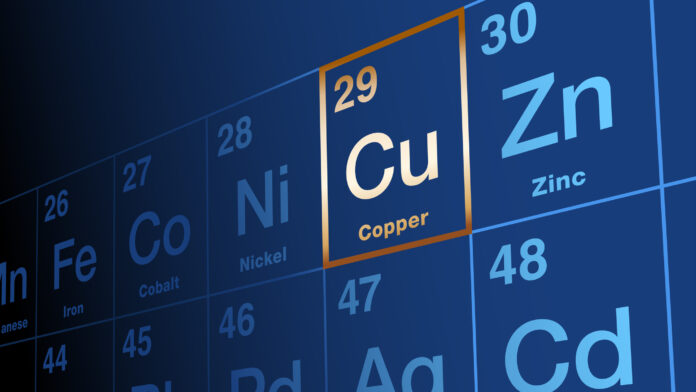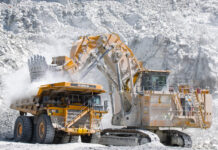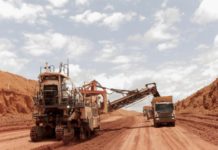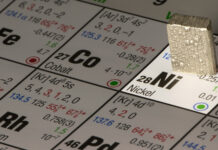
MINERAL exploration in the Northern Cape over the past five years suggests the once-thriving copper district could recapture some of its former glory. In a world faced with a looming copper supply deficit, that’s good news for South Africa’s mining sector. So far, however, major miners have tended to pass over the province’s potential.
There are signs that may change, however. “We are getting some interest from the big players,” says Orion Minerals CEO Errol Smart. “If some predator comes in, we’ll deal with it.” The “tyre-kickers”, as Smart terms potential buyers of the company, can be a distraction to running the business, but, he adds: “We will keep speaking to the big boys.”
Orion is hoping to start production from its Okiep Copper Project in about a year to 18 months, pending financing support. If it does, it will be the second copper mine to reopen in the province after Copper 360 last week began mining from Rietberg Mine — the first primary copper production from the region in more than 40 years.
The Northern Cape was previously mined by US gold miner Newmont and Gold Fields of South Africa after that. An estimated 1.8 million tons (Mt) of finished copper metal has been mined from the province between 1935 and 1990.
Then came a crash in the metal’s price and the mines, which were losing money, were shut. The Northern Cape’s resources lay fallow, and have been superseded by South America’s burgeoning copper resources where nearly all the big miners of the metal operate, including Anglo American and Glencore. BHP and joint venture partner Lundin Group recently agreed to pay $4bn for copper on the Argentina border.
However, at a time when new copper projects are proving harder (and longer) to permit, contain technically challenging lower grades, and are often poorly served by infrastructure, the brownfields potential of the Northern Cape seems an obvious choice for a return.
Glencore CEO Gary Nagle says the group isn’t “averse” to investing in South Africa. “Let’s wait and see; in time, maybe. The guys are doing good work there.” Reading between the lines, he doesn’t appear terribly interested.
“You see a lot of companies trying to set up operations in places like the [Democratic Republic of] Congo. I don’t mind it,” says Copper 360 CEO Jan Nelson. “It just means there’s more for us.” Copper 360 estimates it has economic life-of-mine resources equal to 1.2Mt of the metal. “Most of this we have drilled out and defined on or close to surface with most underground development in place from the Newmont days,” he says. It’s worth R226bn at today’s copper price.
Orion has a similar aspiration, including a second project, the Prieska Copper Zinc Project. Together the Northern Cape’s current crop of mines could yield about 2.5Mt of copper metal — about 10% of global annual production forecast for 2024.
‘Animal spirit’
Glencore produces about 1Mt of copper annually and has potential to double that from projects, two of which are in Argentina where the political risk discount has reduced recently due to political improvements, and a funding deal with the IMF. But finding copper remains as urgent for the globe’s decarbonisation ambitions as ever, if only because China has shown itself hungrier and quicker, with a greater tolerance for failure.
“China is prepared to compete harder than us. We have lost that animal spirit or hunger to go out and compete for assets,” Paul Gait, senior economist for Anglo American said in July at the London Indaba. “It’s related to our tolerance for risk. We put layer upon layer upon layer of risk discounting and then add 1.5 times multiples on capex, and then we wonder why we can’t do anything. It’s a self-fulfilling prophecy. We have allowed ourselves not to compete.”
China is prepared to compete harder than us. We have lost that animal spirit or hunger to go out and compete for assets – Paul Gait, Anglo American
Smart doesn’t say whether Chinese companies have expressed an interest in his firm, and there’s certainly no merger & acquisition premium in his firm’s share price, which is down 31% in the past 12 months despite the prospect of huge supply deficits in copper. If, as economists expect, 2-billion people are added to the world’s population, Gait estimates 500Mt in additional copper, roughly 25 years of the world’s current annual output, will be needed.
“The expectation and need for copper is absolutely categorical,” says Gait who assumes in his calculation that each person consumes about 250kg of copper, the current level as per Western living standards.
Nelson has no interest, as least not yet, in dressing up Copper 360 for a takeover. “We have done the hard yards,” he says. “We think we can make good money out of it and we are not trying to ramp it up the value curve and make it pretty.”
Smart has a slightly different view. “My team is focused on building this business. We are going to build this until somebody comes and offers a cheque that my shareholders accept — against my recommendation.”










